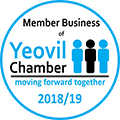 Hi there! How are you today? No, don’t just say “fine” without thinking. How are you really? Might you be just a little bit stressed? Or even a lot stressed?
Hi there! How are you today? No, don’t just say “fine” without thinking. How are you really? Might you be just a little bit stressed? Or even a lot stressed?
Government figures show that in 2016-17, over half a million workers in the UK were suffering from work-related stress, depression and anxiety. This caused 12.5 million working days to be lost. Which means stress doesn’t just suck for the people who are feeling it but for the companies they work for too.
So is there anything that can be done? Of course there is! If you run a business – or a team within a business – you’re in a unique position to change the culture and reduce stress in the workplace. Which makes you something of a superhero really.
Here are a few ideas to get you started…
1) Think flexi
Chaining your team to their desks from 9am to 5pm really isn’t the ideal way to get the most out of them. Some people are early birds who will be much more effective on an 8-4 arrangement. Others will be happier if they can squash their weekly hours into four days so they can have Fridays off. Still others will be far more productive if they can work from home. Flexible working can seriously reduce people’s stress levels, so ask your team about what might suit them. Even the fact that you’re asking will help them feel like they’re being looked after.
2) Get people moving
Physical exercise is one of the best ways to reduce stress levels. Even something as simple as a walk at lunchtime can help people clear their heads, get mental space from their inbox and their deadlines, and get those endorphins pumping to raise wellbeing levels. We’re not suggesting you turf them all out in the cold a couple of times a day, but why not get a lunchtime walk club started, or sponsor their gym passes?
3) Have an open door policy
Here’s a little pop quiz for you. If someone in your team is stressed, are they likely to:
A: Come and talk to you about it
B: Moan to their other half about stressful work is
C: Pour a stiff G&T (or three)
D: Do nothing and carry on regardless
If the answer isn’t A, you need to do something about it. You can’t fix problems you don’t know about, right? People need to know they can talk to you about their stress levels without it impacting their status in the business.
4) Get your filing system sorted
Seriously, it’s bothering your staff – not to mention kicking their productivity levels down a notch or two and actually costing you money. Need proof? Research shows that a third of office employees see searching for documents as “difficult” or “frustrating”, with 42% saying it takes up to 15 minutes to find a document or file. Just think about that. If someone were to search for 16 files in the course of the day, they’d have spent half their time in the office doing that!
[Plug time! If you need help creating a filing system that is anything but stressful, get in touch – if we do say so ourselves, we’re really, really good at organising stuff. We can store your physical documents and deliver them back as you need them, or scan them and create a digital archive. Or both. Both is always a good option.]
5) Ban desk lunches
There are so many reasons why eating your lunch while you work is bad for your wellbeing. Firstly, you don’t get a break. Secondly, you don’t get to socialise. Thirdly, you don’t actually get to taste and enjoy your food. Banning desk lunches might seem extreme but it will show your team that you prioritise their wellbeing over the need to get stuff done. Consider creating a break out space in your office where people can eat and chat, or why not organise a weekly event like a bring and share lunch or pizza party?
6) Say thank you
Sometimes we all have to work hard. That in itself doesn’t have to be stressful. If you manage the situation properly then powering through an important project together can actually help your team bond and feel proud as they achieve a big win. But if you don’t encourage them along the way, recognise their efforts and say thank you at the end… well, you probably won’t get the same level of effort next time. Saying thank you is easy. Saying sorry is harder.
7) Lead by example
If you want your kids to eat vegetables and you’re busy scoffing an ice cream, you’re fighting a losing battle. And since leadership is a lot like parenting, the same principle applies in the office. Are you stressed? Are you doing what you can to reduce your stress levels? Remember that old example of putting on your own oxygen mask before you help others. You can’t help your team if you’re stuck at home recovering from a breakdown.
Reducing stress levels will improve your team’s productivity and make your office a nicer place to work. Which is good news for everyone. So think about whether you could implement one of more of these suggestions, then ask your team what else they’d like to see change.
 Imagine, just for a moment, that you had a free office. As in empty rather than rent free. Like if you somehow managed to eliminate several dozen boxes of paper archives (you know, by
Imagine, just for a moment, that you had a free office. As in empty rather than rent free. Like if you somehow managed to eliminate several dozen boxes of paper archives (you know, by 
 If there’s one thing the document scanning industry does well, it’s technology. We might not go as far as to say we love the machines we use to scan our clients’ documents, but we certainly like them a lot. (Oh, who are we kidding – we love them.)
If there’s one thing the document scanning industry does well, it’s technology. We might not go as far as to say we love the machines we use to scan our clients’ documents, but we certainly like them a lot. (Oh, who are we kidding – we love them.) You know what’s really annoying? Paying for stuff like parking. And insurance. And getting the boiler serviced. Stuff that you have to have, but which isn’t fun like, say, theatre tickets or a new set of golf clubs. But what’s even worse than paying for that need-not-want stuff is paying more money than you actually have to for it.
You know what’s really annoying? Paying for stuff like parking. And insurance. And getting the boiler serviced. Stuff that you have to have, but which isn’t fun like, say, theatre tickets or a new set of golf clubs. But what’s even worse than paying for that need-not-want stuff is paying more money than you actually have to for it. We’re the first to admit that the document scanning and storage industry is hardly awash with high drama. It’s unlikely, in the course of any given day, that we’re likely to find ourselves facing anything more interesting* than several dozen boxes of customer survey forms, or a back office laden with technical drawings.
We’re the first to admit that the document scanning and storage industry is hardly awash with high drama. It’s unlikely, in the course of any given day, that we’re likely to find ourselves facing anything more interesting* than several dozen boxes of customer survey forms, or a back office laden with technical drawings. What would happen if you lost all your data? Sorry, perhaps we should have started with something a little gentler. Cup of tea? Biscuit?
What would happen if you lost all your data? Sorry, perhaps we should have started with something a little gentler. Cup of tea? Biscuit? “How long do I need to keep my business records?” It’s a question we’re asked fairly often – but probably not often enough.
“How long do I need to keep my business records?” It’s a question we’re asked fairly often – but probably not often enough. When you rent your office by the square foot, a chance to save office space means a chance to save money. But how far would you go to shave a few inches off your floorplan to help keep costs down? If you need to save space in the office here’s 5 solutions (if you’re up for a challenge):
When you rent your office by the square foot, a chance to save office space means a chance to save money. But how far would you go to shave a few inches off your floorplan to help keep costs down? If you need to save space in the office here’s 5 solutions (if you’re up for a challenge): Relocate to Outer Space
Relocate to Outer Space






